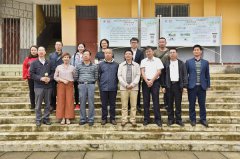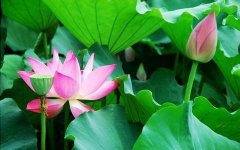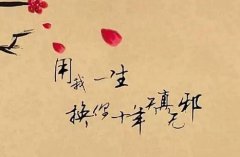外研版SB4 MODULE 6 同步阅读(2)
A.A huge lake in Chile disappeared overnight.
B.A huge lake caught the attention of scientists.
C.A big river became small overnight.
D.Where did all the water go?
解析:选A。主旨大意题。通读全文,可知本文是围绕智利的一个冰川湖的消失之谜展开的,故选A项做文章的标题最好。
B
Have you ever known someone with a “photographic memory”? It's easy to assume that people with super memories are super intelligent, but the key to their ability is in the methods that they use to remember information. By learning and mastering some basic techniques, you can also boost your memory. Here are some tips to make it happen.
Get enough sleep
Sleep is our body's way of “rebooting” (重启) our systems. Besides allowing our bodies to recover, sleep also helps our brains to process all of the information that they have received during the day. When we fail to get enough sleep, our brains experience an overload of memory.
Organize before you memorize
It turns out that our brains work much like today's computers do. The more efficiently we store information, the more available storage space we'll have. So when memorizing information, store it into chunks (组块) that are logically grouped.
Use visual and auditory input
Our senses have a crucial role in creating our memories. Pictures, graphs, and recordings can help to make our memorization more concrete. These types of techniques are particularly effective for those who are “visual” or “auditory” learners. Certain mnemonic techniques work better for certain people.
Make memorization meaningful
It's one thing to memorize facts and figures for the sake of doing it. It's quite another thing to make the information meaningful. Make it personal and seek a deeper understanding of the information. These basic steps will help you to memorize more information, and memorize it faster.
Connect new information with prior knowledge
You'll be able to store information faster, by linking new information that you memorized, with information that you memorized in the past. By linking new information with old information, you'll improve both your shortterm and longterm memories.
While not all of us are born with a photographic memory, by using these tips you can transform your brain into a super computer. Forget about needing to say “I forgot” throughout the day!
| 语篇解读:每个人都想拥有超强的记忆力,该文主要介绍了提高记忆力的几个方法。 |
A.prove that everyone can have a good memory
B.stress that a person has a very good memory
C.show what matters much to a good memory
D.tell us a good memory is important for everyone
解析:选B。细节理解题。根据文章第一段 “It's easy to assume that people with super memories are super intelligent”, 可知, “photographic memory”用来强调记忆力好的人。
7.By saying “like today's computers do” in Paragraph 3, the author means that ________.
A.people can turn to computers to improve their memory
B.computers have been popular in our daily life
C.similar information should be stored together
D.it is not as difficult as it seems to improve one's memo!
解析:选C。细节理解题。根据文章第三段 “So when memorizing information, store it into chunks(组) that are logically grouped.” 可知,相似的信息应该放在一起记忆。
8.The underlined word “mnemonic” in Paragraph 4 can be best explained as “________”.
A.helpful to remember something
B.simple to record
C.wellknown to all people
D.strange to all learners
解析:选A。词义猜测题。根据文章第四段 “These types of techniques are particularly effective for those who are ‘visual’ or ‘auditory’ learners.” 可知,该词与 effective 词义相近,故A项正确。
9.To memorize both new and old information, people should ________.
A.find relationships between them
B.spend much time memorizing them
C.discuss them with others
D.explore the meanings of them
解析:选A。细节理解题。根据文章第六段 “By linking new information with old information, you'll improve both your shortterm and longterm memories.” 可知,要想记忆新旧信息,人们需要找出它们之间的联系。
10.This passage was written mainly for ________.
A.students who have to take many exams
B.computer designers who need to memorize a lot of information
C.experts who study on memory
D.people who want to improve their memories
解析:选D。推理判断题。该文主要介绍了提高记忆力的几个方法,故主要写给想提高记忆力的人。
A
One Saturday afternoon in February, 1943, a farmer in Mexico stopped working for a moment and looked across his fields of corn. Suddenly he saw a thin line of white smoke curling up out of his field, about 200 feet from where he stood. As he went toward the smoke to see what it was, he heard a strange noise. The line of smoke became bigger. It looked as if some great force were pushing it up into the sky.
The farmer rushed home to get his wife. While he was urging his wife to hurry from the house, the earth shook violently. When he stood up after the earth stopped shaking, he looked across the field and saw that great flames were rising from his cornfield. A volcano was being born!
They hurried across the shaking earth to the village of Particutin, which was toward their farm. They found the village was seriously destroyed and the road from the village was filled with frightened people hurrying to safety.
Particutin did not become dark that night. The volcano lighted up the sky for miles around. Flames rushed out of the ground. The volcano threw hot stones a thousand feet through the air. Great explosion shook the earth and heavy black ashes fell from the sky, covering the roofs in Mexico city, 180 miles away.
But that was not all. On the third evening a float of lava(火山岩) began to boil up from the centre of the volcano. It came over the edge in a heavy flow, 2 000 feet wide, and travelled slowly across the valley, bringing certain death to everything that could not move from its path.
| 语篇解读:本文描述了1943年2月的一个星期六下午,在墨西哥境内的一座火山爆发的全过程,村庄被毁,村民逃亡,火山岩浆向四周流淌。 |
A.the volcano threw out a lot of ashes and hot stones
B.the volcano lasted several days
C.many people had to escape from the village
D.it caused many deaths and great loss
解析:选D。细节理解题。根据第四段可知,火山喷出许多的灰和炙热的石头;根据最后一段可知,火山喷发延续至少三天以上;根据第三段最后一句可知,恐慌的村民匆匆逃往安全的地方。文章并未提到火山喷发造成的死亡和损失情况,所以答案为D项。
2.You can find the passage in a ________.
A. newspaper B. government report
C. leaflet for travellers D. handbook




